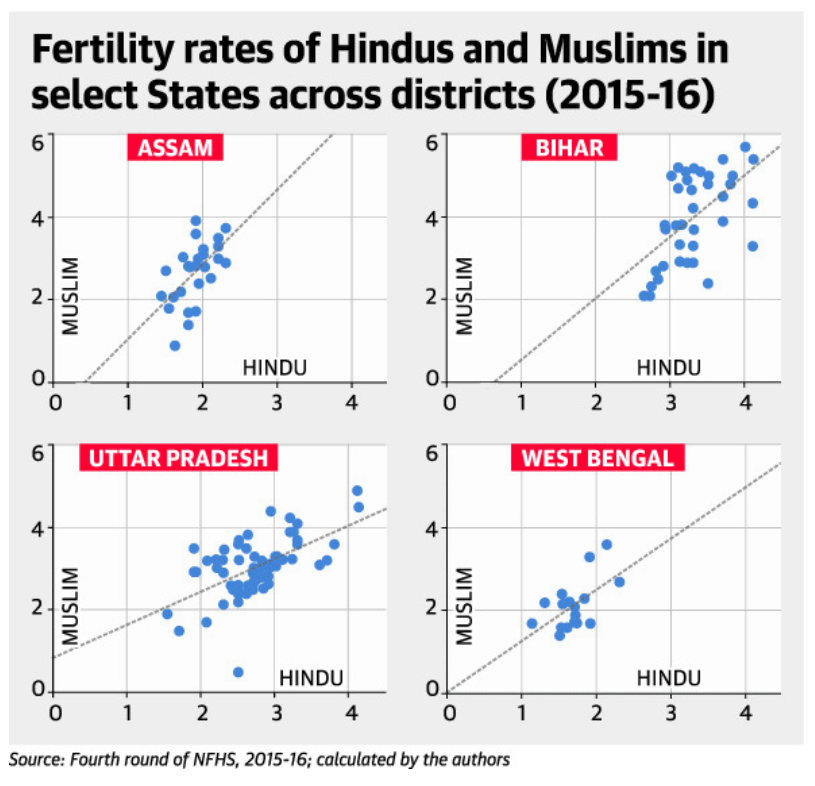ForumIAS announcing GS Foundation Program for UPSC CSE 2025-26 from 19 April. Click Here for more information.
ForumIAS Answer Writing Focus Group (AWFG) for Mains 2024 commencing from 24th June 2024. The Entrance Test for the program will be held on 28th April 2024 at 9 AM. To know more about the program visit: https://forumias.com/blog/awfg2024
Contents
Relevance: Population control measures have to be rational and focus on the welfare-based approach
Synopsis:
Data from Assam and Uttar Pradesh show that fertility rates have been reducing over time.
Introduction
The Uttar Pradesh Population (Control, Stabilisation and Welfare) Bill of 2021 promotes a two-child policy. A similar law has also been proposed in Assam as well. The Assam CM announced a ‘population army’ to curb the birth rate in Muslim-dominated areas in lower Assam.
| Read more: Why UP’s proposed population control bill is bad as policy and politics |
Decreasing fertility rates in India:
The population projection published by the Union Ministry of Health and Family Welfare in 2019 mentioned that U.P. will reach a replacement rate (the rate at which women give birth to enough babies to sustain population levels) of 2.1 by 2025, and Assam by 2020.
- According to the National Family Health Survey (NFHS)-2 data, the total fertility rate (TFR) in 1998-99 in U.P. was 3.87. It was decreasing in UP. The NFHS-5 data for 2019-20 for U.P. has not been published.
- The fertility trend for Assam is even starker. According to NFHS data, Assam had a TFR of 3.5 in 1992-93, which decreased to 1.9 in 2019-20.
| Read more: Population populism: UP draft population bill fails tests of necessity, intrusiveness |
Does the fertility rate depend on religion?
The fertility rate does not depend on religion. It depends on socio-economic characteristics like education, income, maternal and child health conditions, and other associated factors.

The district-wise fertility rates for Hindus and Muslims in four States: U.P., Assam, West Bengal, and Bihar have shown in the graph. It is clear from the graphs that there is a positive relationship between the fertility rates of Hindus and Muslims.
In other words, in districts where Hindus have a high fertility rate, the fertility rate of Muslims is also high.
Problem of ageing
As per the population projection report, the proportion of people aged 60 years and above will increase from 13.8% in 2011 to 23.1% in 2036.
Conclusion
India’s decades-old population policy has achieved replacement level fertility in the country without taking any coercive measures. Governments should have faith in these time-tested policies and respect the choices of people, rather than impose warped and motivated ideas regarding demography on the people.
| Read more: Population control measures in India – Explained, pointwise |




